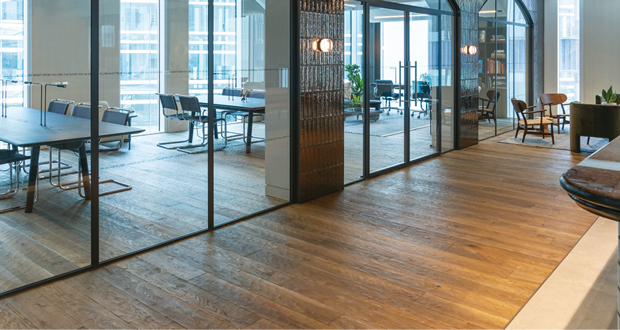 Christian Mabey, Managing Director, Optima Systems says a new approach is needed to help bridge the gap between innovations in workplace design and fire safety
Christian Mabey, Managing Director, Optima Systems says a new approach is needed to help bridge the gap between innovations in workplace design and fire safety
In my role as Managing Director of Optima Systems, I’ve had a front-row seat to the rapid evolution of commercial building design. While our industry has embraced open, flexible spaces and sustainable materials, its approach to fire safety hasn’t kept pace. This disconnect poses a significant challenge, and it’s time for a fundamental shift in how we think about fire safety in today’s buildings.
The commercial buildings of today are far removed from the traditional designs of the past. Open-plan offices, multifunctional areas, and ‘eco-friendly’ materials are the new standard. Yet, fire safety strategies haven’t evolved alongside these innovations. The wider industry is applying outdated safety principles to spaces that demand new approaches, and this could have serious consequences.
Consider the typical modern office—full of glass partitions, open work areas, and expansive atriums. Traditional fire safety measures, which rely on compartmentalisation, may not be as effective in these settings. The materials we use today, while innovative, might behave unpredictably in a fire compared to more conventional options.
KNOWLEDGE GAPS
This shift in building design has created a gap in industry knowledge. Many professionals—whether architects, contractors, or facility managers—are struggling to keep up with how these new designs impact fire safety. Too often, aesthetic and functional decisions are made without a full understanding of the safety implications.
I’ve seen firsthand how project teams wrestle with applying conventional fire safety regulations to non-traditional spaces. It’s not a lack of concern for safety—rather, it’s a lack of updated knowledge and resources to address these new challenges effectively.
REDEFINING FIRE SAFETY STANDARDS
To close this gap, our industry needs to rethink its approach to fire safety. We need to prioritise the development of testing and standards that better reflect modern building practices. This could involve:
- New Testing Protocols: Creating fire safety tests tailored to modern materials and design trends.
- Performance-Based Standards: Moving towards flexible safety regulations that can adapt to different types of spaces and the unique characteristics of each project.
- Advanced Simulation Tools: Leveraging new technology to predict how fires will behave in unconventional environments.
Proactive steps are needed across the industry, with research and innovation focused on understanding how modern partitioning systems and materials perform under fire conditions. The challenge is to develop solutions that enhance fire safety while maintaining the design flexibility that modern buildings demand.
COLLECTIVE RESPONSIBILITY
Addressing these fire safety challenges demands a unified effort across the industry. Collaboration is essential, and our focus should be on critical questions such as:
- Early Design Integration: How can we embed fire safety considerations into the very beginning of the design process?
- Adopting New Technologies: Which emerging technologies can enhance fire detection and suppression in today’s open-plan environments?
- Industry-Wide Education: How can we ensure that all stakeholders are educated about the unique fire safety challenges that come with modern building designs?
The answers to these questions will require collaboration across the industry. By working together, we can create commercial spaces that are not only innovative and functional but also fundamentally safe.
THE ROAD AHEAD
As we look to the future, it’s essential to view fire safety as an integral part of building innovation—not as an afterthought or regulatory burden. Each new project offers an opportunity to establish safety benchmarks that align with today’s architectural realities.
By fostering collaboration, embracing new technologies, and ensuring that education keeps pace with innovation, we can lead the industry towards a safer, more forward-thinking future. Fire safety in modern commercial buildings presents complex challenges, but with determination and a willingness to adapt, these challenges can be overcome.
Now is the time for our industry to rise to the occasion, ensuring that our commercial spaces are as safe as they are cutting-edge.





